Meross WiFi Dual Smart Outlet review: Double the outlets at half the price
The Meross WiFi Dual Smart Outlet lets you connect two accessories into the same plug and control them separately through HomeKit, while also being cheaper than buying two smart plugs individually.
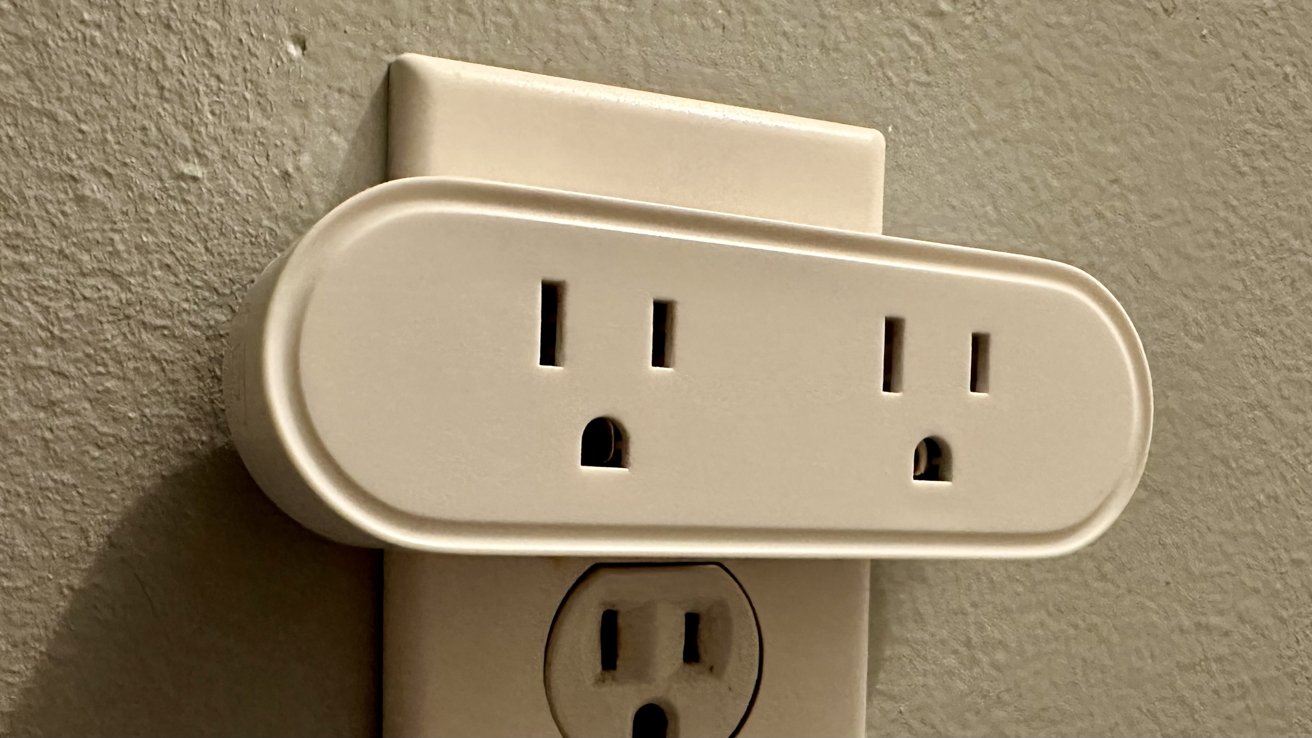
Meross WiFi Dual Smart Outlet review: Device plugged in
Meross, a well-known company in the HomeKit ecosystem, offers a variety of HomeKit-compatible devices sold at a decent price. These devices range from plugs to lamps and even garage door openers.
At AppleInsider, we are no strangers to Meross products and have experienced favorable usage. For the Dual Smart Outlets, the trend continues.
If you want to control two accessories near one another from your devices, then the Dual Smart Outlet will do the trick. It offers the same capabilities as having two separate smart plugs but takes up less space.
Meross WiFi Dual Smart Outlet -- A basic two-in-one design
The Meross WiFi Dual Smart Outlet sports a two-in-one design that only utilizes one outlet. This is great for saving space and having one additional outlet open for another appliance.
Measuring 4.5 x 1.6 x 1.2 inches, the plug is small enough not to take up any room in front of the other outlet. By weighing only five ounces, you don't have to worry about it falling out of the outlet due to its weight.
On the front are two type-b outlets that can output a maximum of 10A. A status light -- that'll glow green when the power is on and blink red when the plug has connection issues -- is located in the upper left.
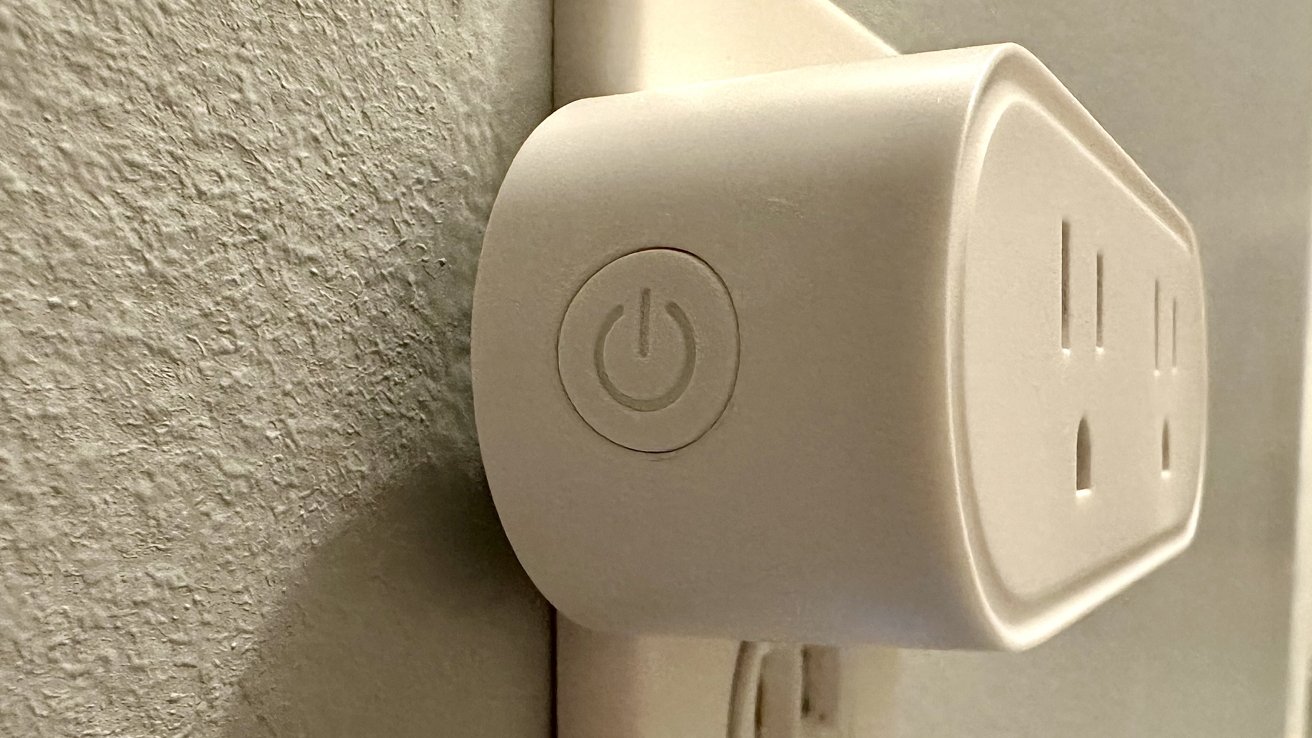
Meross WiFi Dual Smart Outlet review: Power button
The only way to physically control the plug is with the solo button on the left side, which will manage the power of both outlets. This means you cannot control each outlet individually from the plug itself, and if you want to, you must do it in the app.
Meross WiFi Dual Smart Outlet -- App connectivity
Like most HomeKit-compatible accessories, you can choose which app to set the Meross WiFi Dual Smart Outlet up in -- the Home app or its native app.
You must connect the plug to a 2.4 GHz network, or you cannot set it up. This is standard for most smart home devices.
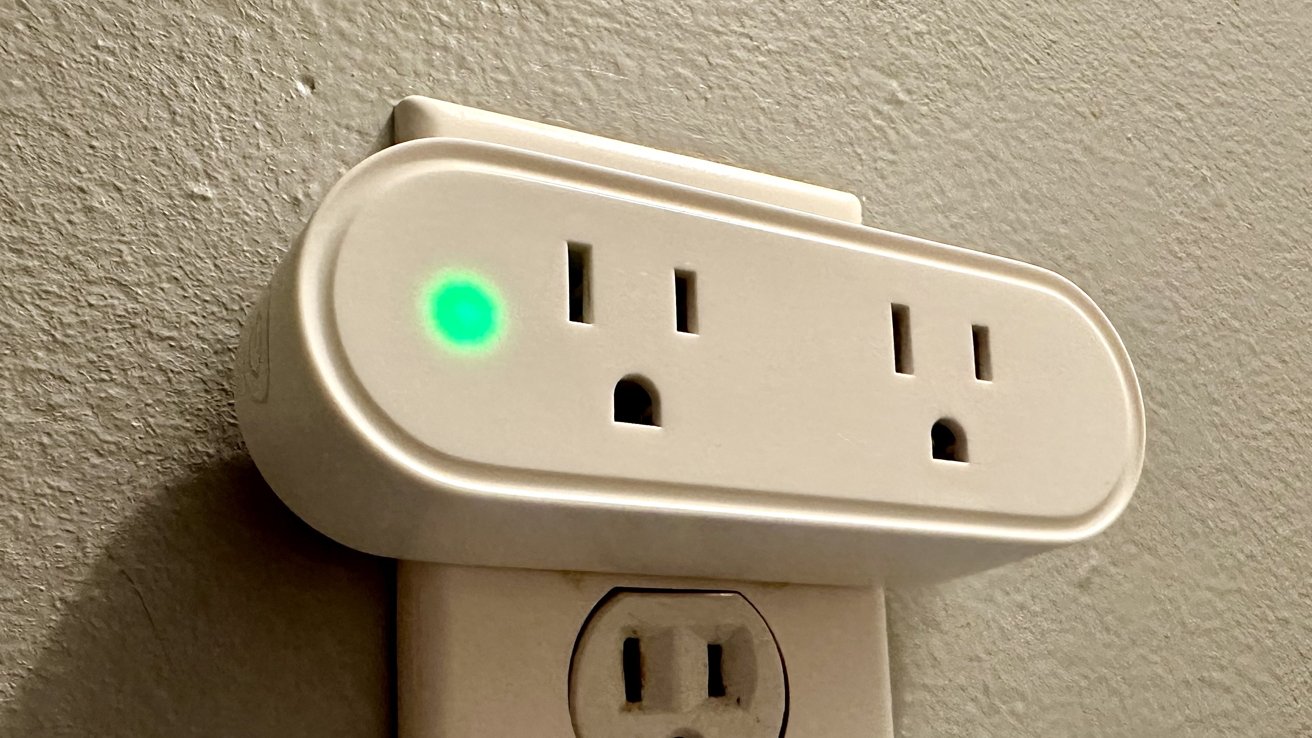
Meross WiFi Dual Smart Outlet review: Connection/power indicator light
When we first installed the plug, we had some connection issues where the Dual Smart Outlet would frequently disconnect from the network and become unresponsive. However, after adding a WiFi extender to the room and restarting our router, the problem seemed to disappear.
While the fix was easy, it was still an inconvenience that required additional equipment to make the device stay connected to our devices.
Apple's Home app
Like other compatible devices, you can customize your plug within the Home app. You can combine it with other plugs into one group, customize its name and icon, and start or add it to your existing automation or shortcut.
If you add it to an automation or scene, you can preset if you want it on or off when activated.
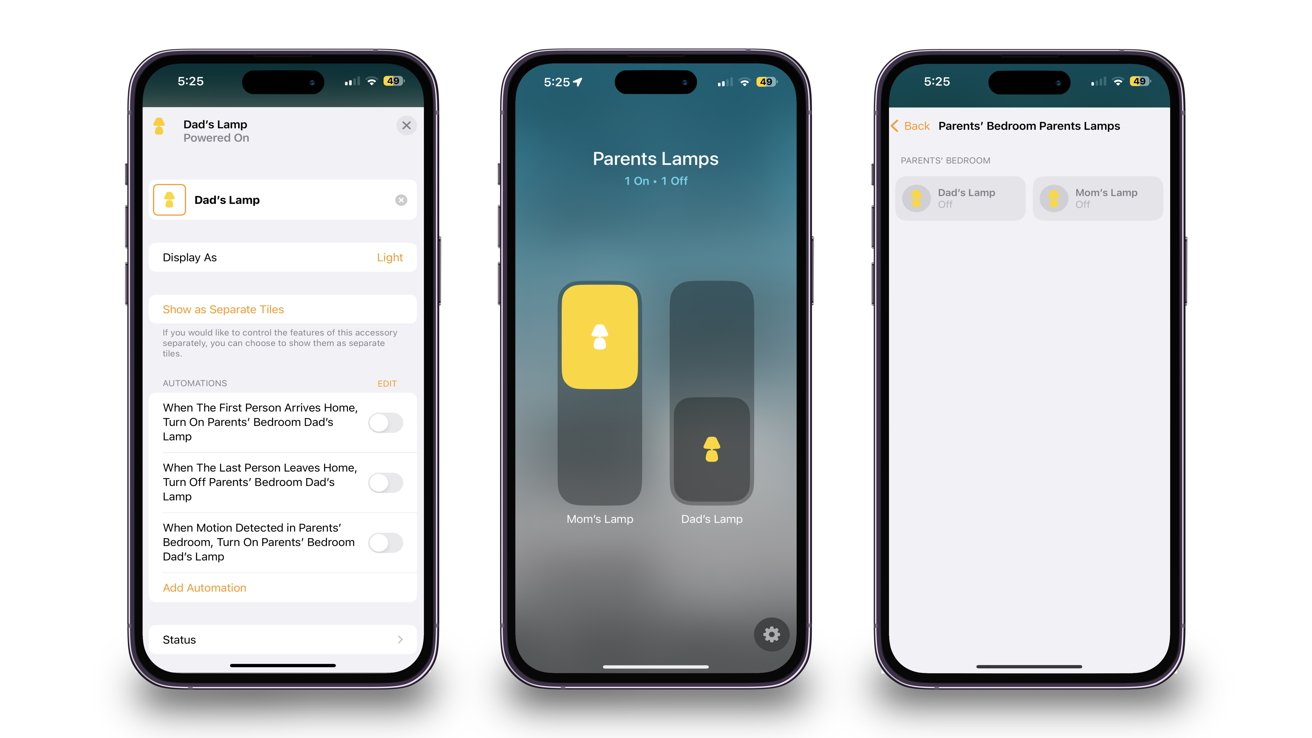
Meross WiFi Dual Smart Outlet review: Home app controls
From the start, both outlets will be grouped into one tile, but unlike other groups that you manually make, you cannot control both simultaneously with a single tap. You must go into the tile and manually flip each outlet to turn them on or off.
To make each outlet into separate tiles, go into the plug's settings and tap on the option to show them as individual tiles. To regroup them, redo the same steps, but tap the option to merge them into a single tile.
If your device isn't around -- or you don't want to open the Home app -- Siri can help control the whole plug or each outlet independently.
Meross's native app
Meross's native app allows you to control the plug's basic functionality, but it's not as in-depth as the Home app.
After adding the Dual Smart Outlet to the native app, it'll group both outlets into one tile. But unlike the Home app, you cannot separate each into individual tiles.
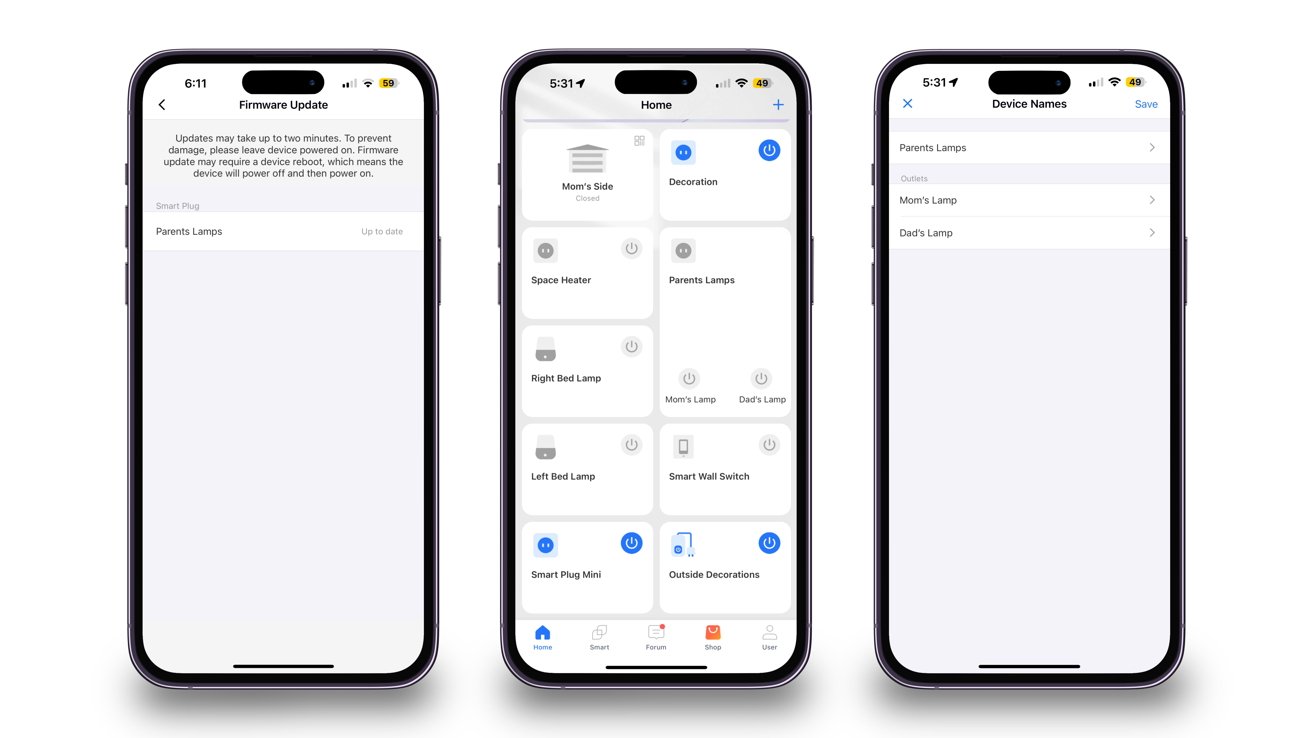
Meross WiFi Dual Smart Outlet review: Meross native app controls
You can control each outlet from the supplied power buttons on the homepage. Under each button is either outlet's name, so you know which one is being managed.
Tapping on the plug's tile will bring you into its settings. There, you can change the name of the plug and each outlet. But unlike other plugs, you cannot change its displayed icon.
You can add the Dual Smart Outlet to scenes and routines from within the app, similar to shortcuts and automations in the Home app. You can determine each outlet's action when a scene or routine is activated.
Meross WiFi Dual Smart Outlet -- A good-priced double smart plug
The Meross WiFi Dual Smart Outlet is a great way to individually control two appliances from a single plug at a price that won't break the bank.
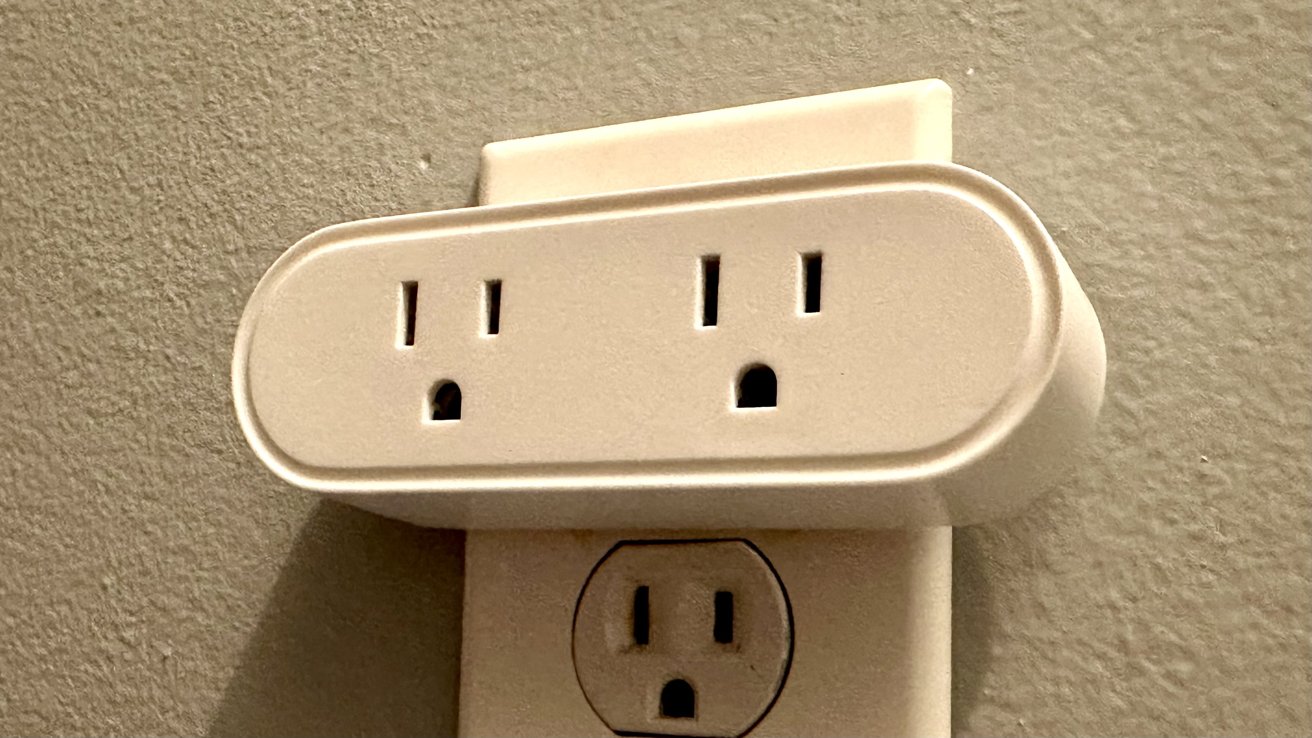
Meross WiFi Dual Smart Outlet review: Plug stationed
A singular smart plug from Meross can retail for around $16. And while the Dual Smart Outlet costs the same amount, it controls double the number of devices while taking up the same amount of space.
While cheaper smart plugs don't usually perform well, the Dual Smart Outlet responded efficiently to commands, was easy to use, and fit nearly any environment. The only downside would be that it cannot fit into tight spots width-wise, but that's a minor inconvenience that many may not have.
If you want to control two appliances from your device without taking up both outlets, then the Meross WiFi Dual Smart Outlet is a great option. It offers the same usability as two plugs but is significantly more affordable.
Meross WiFi Dual Smart Outlet -- Pros
- Great price
- Easy to use
- Big status light
Meross WiFi Dual Smart Outlet -- Cons
- Initial connection issues
- No physical buttons per outlet
- Home app cannot turn both outlets on simultaneously
Rating: 4 out of 5
Where to purchase the Meross WiFi Dual Smart Outlet
You can purchase the Meross WiFi Dual Smart Outlet from Amazon for $16.99. It's only available in white.
Read on AppleInsider

Comments
There are TONS of HomeKit enabled light switches. So the entire switch is inside the electrical box in the wall.
So far I can find a grand total of ONE outlet that is HomeKit enabled. As in, the outlet itself, not needing to plug in a big chunky brick into an existing outlet. I wish there were more options here!
I've always setup my WiFi this way simply to eliminate one degree of uncertainty and based on experience with a number of different WiFi based smart devices. Once configured and set up, all of my smart devices have been very reliable and rarely, if ever, show up as disconnected. The worst offender, a Wemo smart plug, would disconnect perhaps once every 6-8 months but after its last update last year it has never disconnected. If I had to guess, I'd say that a nontrivial number of setup and configuration issues that users experience will be on networks with everything using the same SSID.
My iPhones, iPads, and other walk-around client devices are configured to recognize both WiFi networks but seem quite content to hang on to the 5 GHz network, in part because I keep my 2.4 GHz radios at fairly low power levels. I'll probably upgrade my wireless access points to WiFi 6 next year now that I have a few compatible clients, which will ease the congestion on the 5 GHz channels, but the 2.4 GHz stuff is not going to go away anytime soon and those are the channels most vulnerable to congestion. Knowing that those devices are segregated on the 2.4 GHz network is good to know. But I'm curious to see if other vendors start shipping Matter devices that support configuration and setup from any WiFi access point hanging off the same LAN.